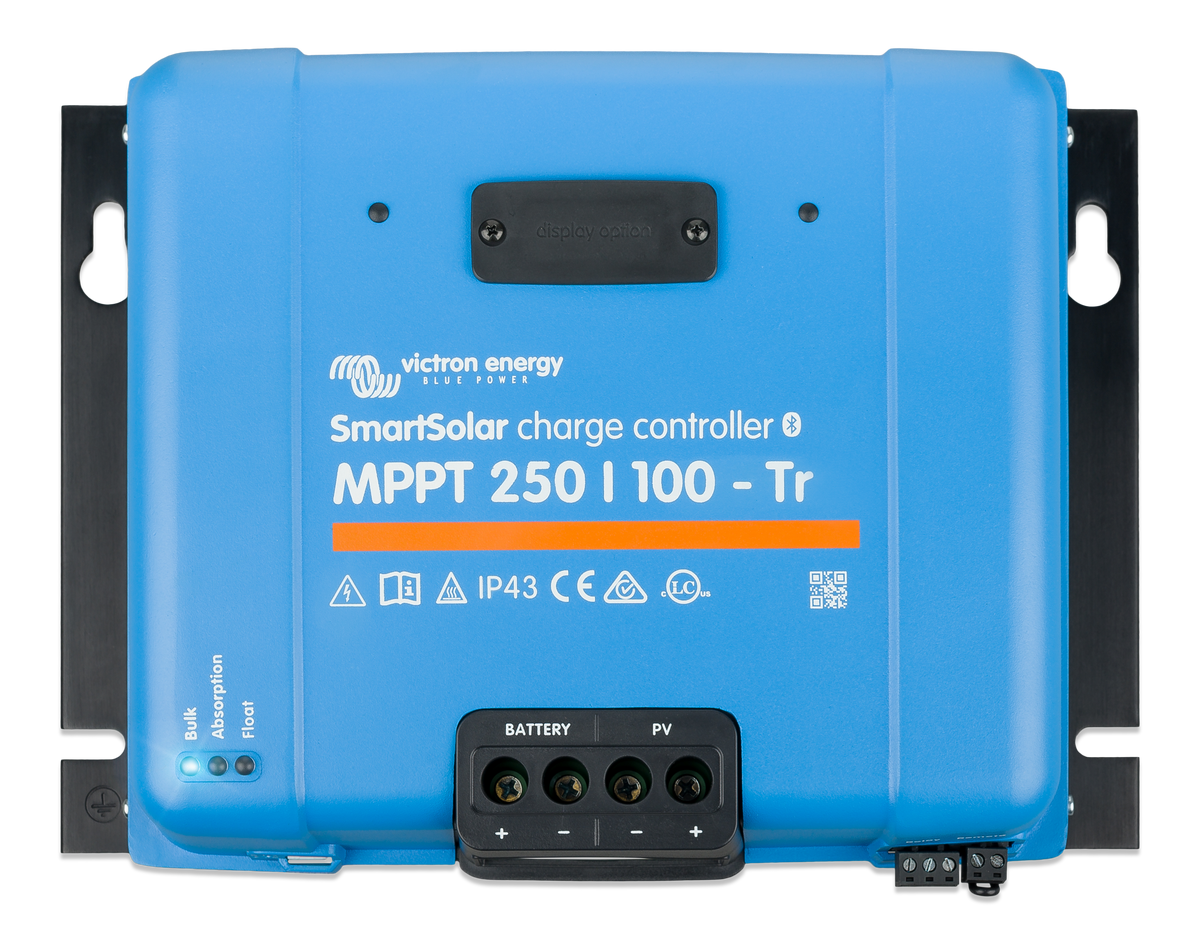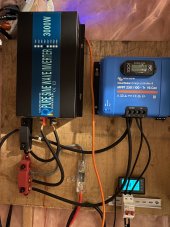I'm running into a strange over voltage problem with my inverter after just switching to the Victron 250/100 CC
I've just replaced my Renogy Rover 60A charge controller with the Victron 250/100:

 volts.ca
volts.ca
I have this inverter which has been previously working fine with the Renogy CC
I've only had the Victron for a few days and now that we have had a full day of sun, my battery got full again.
The Victron CC went into absorption mode today and this is when the issue seems to happen.
When it's in bulk mode, there is no issue.
So the issue is that the inverter trips due to high voltage when the CC switched to absorption from bulk.
I saw that when putting a 1800W load(boiling water in a kettle + aquarium pumps + lights), the CC switched back to bulk(as there is cloud cover and it can't power directly on solar). The normal load is about 300W from the aquarium during the day time.
Battery is a 100aH 48V server rack LiFePO4 battery.
When the big part of the load was removed(water boiled and kettle shut off), the CC switched back to absorption pretty quickly.
During this short time, I saw on my Renogy shunt display that the voltage spiked to around 61V.
I am using the built in Victron pre-set(Smart Lithium) for LiFePO4 which has absorption voltage of 56.80V and float voltage of 54.00V
It shows equalization voltage: disabled and automatic equalization: disabled.
Has anyone had this problem with Victron CCs?
Any suggestions on how to remedy this? Should I just set everything to manual settings?
Any ideas why the voltage spikes briefly to around 61V when it switches to absorption mode?
I came across a similar issue reported in this other thread with EPEVER CCs but you'd think Victron wouldn't have this problem?

 diysolarforum.com
diysolarforum.com
I've just replaced my Renogy Rover 60A charge controller with the Victron 250/100:

Victron energy SmartSolar MPPT 250/100-Tr VE.Can | SCC125110412
Victron MPPT 250V/100A charge controller is the most efficient solar charge controller to increase energy harvest for solar panels. Victron Smart Solar MPPT is Suitable for charging 12, 24, 48V batteries. Shop Online for Victron MPPT with the lowest price in Canada.
I have this inverter which has been previously working fine with the Renogy CC
I've only had the Victron for a few days and now that we have had a full day of sun, my battery got full again.
The Victron CC went into absorption mode today and this is when the issue seems to happen.
When it's in bulk mode, there is no issue.
So the issue is that the inverter trips due to high voltage when the CC switched to absorption from bulk.
I saw that when putting a 1800W load(boiling water in a kettle + aquarium pumps + lights), the CC switched back to bulk(as there is cloud cover and it can't power directly on solar). The normal load is about 300W from the aquarium during the day time.
Battery is a 100aH 48V server rack LiFePO4 battery.
When the big part of the load was removed(water boiled and kettle shut off), the CC switched back to absorption pretty quickly.
During this short time, I saw on my Renogy shunt display that the voltage spiked to around 61V.
I am using the built in Victron pre-set(Smart Lithium) for LiFePO4 which has absorption voltage of 56.80V and float voltage of 54.00V
It shows equalization voltage: disabled and automatic equalization: disabled.
Has anyone had this problem with Victron CCs?
Any suggestions on how to remedy this? Should I just set everything to manual settings?
Any ideas why the voltage spikes briefly to around 61V when it switches to absorption mode?
I came across a similar issue reported in this other thread with EPEVER CCs but you'd think Victron wouldn't have this problem?

Inverter cutting out due to high voltage .....
I need to run my koi pond by solar but my inverter keeps tripping out due to over voltage? The system was running fine until we got a sunny day about a week ago and ever since the inverter has been causing me nightmares. As you will understand because it is running a Koi pond pump, aerator and a...



